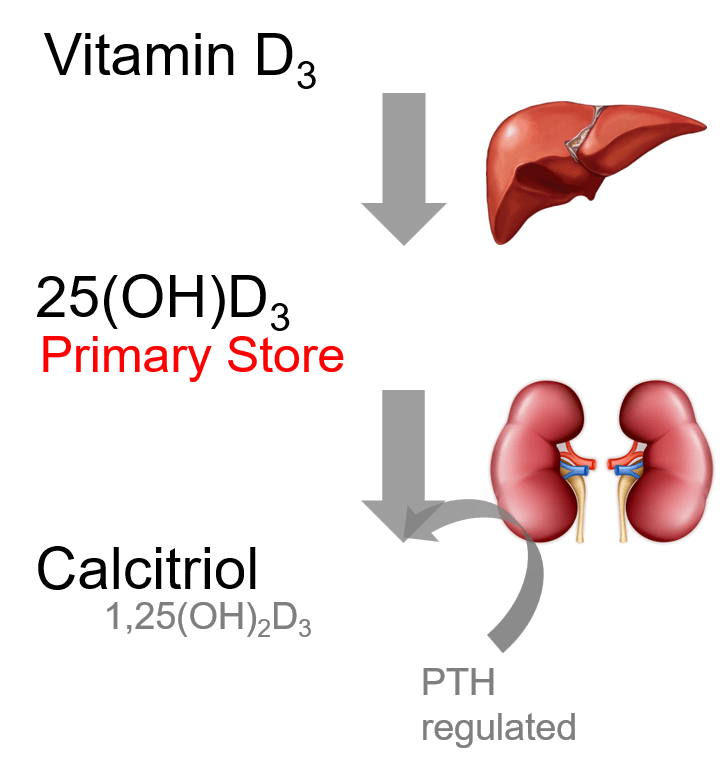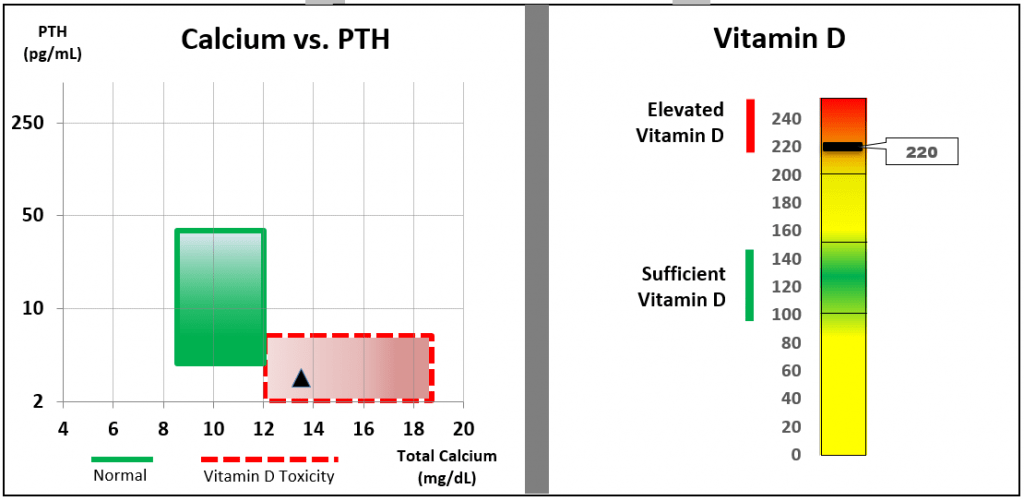
Over the years, and just recently, there have been food recalls concerning excess vitamin D in pet food and reported ‘vitamin D intoxication’. Pets eating these foods and exhibiting signs of hypercalcemia are assumed to have vitamin D intoxication.
Background:
Vitamin D exists as three different forms:
- Vitamin D3
- 25-hydroxy-vitaminD (25(OH)D)
- 1,25-dihydroxy-vitaminD (calcitriol).
Both D3 and 25(OH)D are relatively inert – only the activated form, calcitriol, in excess, can cause hypercalcemia.

The parathyroid gland regulates the production of calcitriol by the kidney in response to calcium levels. Following simple enzyme kinetics the substrate (25(OH)D) is converted into the product (calcitriol). In vitamin D intoxication, there is too much substrate (25(OH)D) present making too much product (calcitriol).
To know if a patient has suffered vitamin D intoxication three questions need to be answered:
- Does the patient have abnormally high levels of 25(OH)D?
- Has the parathyroid gland responded appropriately and shut down the production of PTH?
- Does the patient have hypercalcemia?
For a patient to have vitamin D intoxication, all three questions need to be answered “YES”.
25(OH)D
Approximately 75% of unsupplemented dogs and cats are vitamin D insufficient (1). The primary source of vitamin D is through dietary protein (chicken, lamb, fish, etc) and a minor amount via food supplementation (AAFCO guidelines 500 IU D3/kg dry food (2)). In vitamin D intoxication, excess supplement is the culprit. Patients with vitamin D intoxication should exhibit abnormal levels of 25(OH)D.
PTH
In the event of excess calcitriol production in vitamin D intoxication, PTH production should shut down completely. In some patients with subclinical primary hyperparathyroidism, vitamin D deficiency can mask this condition. When the patient consumes food with more vitamin D, even though vitamin D levels may not be abnormal, the parathyroid gland fails to shut down yielding hypercalcemia.
Calcium
The final event in vitamin D intoxication is hypercalcemia. Patients with vitamin D intoxication should exhibit hypercalcemia.
Vitamin D Intoxication Plot
When calcium vs. PTH is plotted, patients with vitamin D intoxication should fall within the lower right-hand quadrant (hypercalcemia with very low PTH). This is the same quadrant as hypercalcemia of malignancy. Patients suspected to have cancer should be tested with the TK Cancer Panel.

References:
- Selting K (2015) The effect of diet on serum 25-hydroxyvitamin D concentrations in dogs. BMC Res Notes
- AAFCO (2014) AAFCO methods for substantiating nutritional adequacy of dog and cat foods
